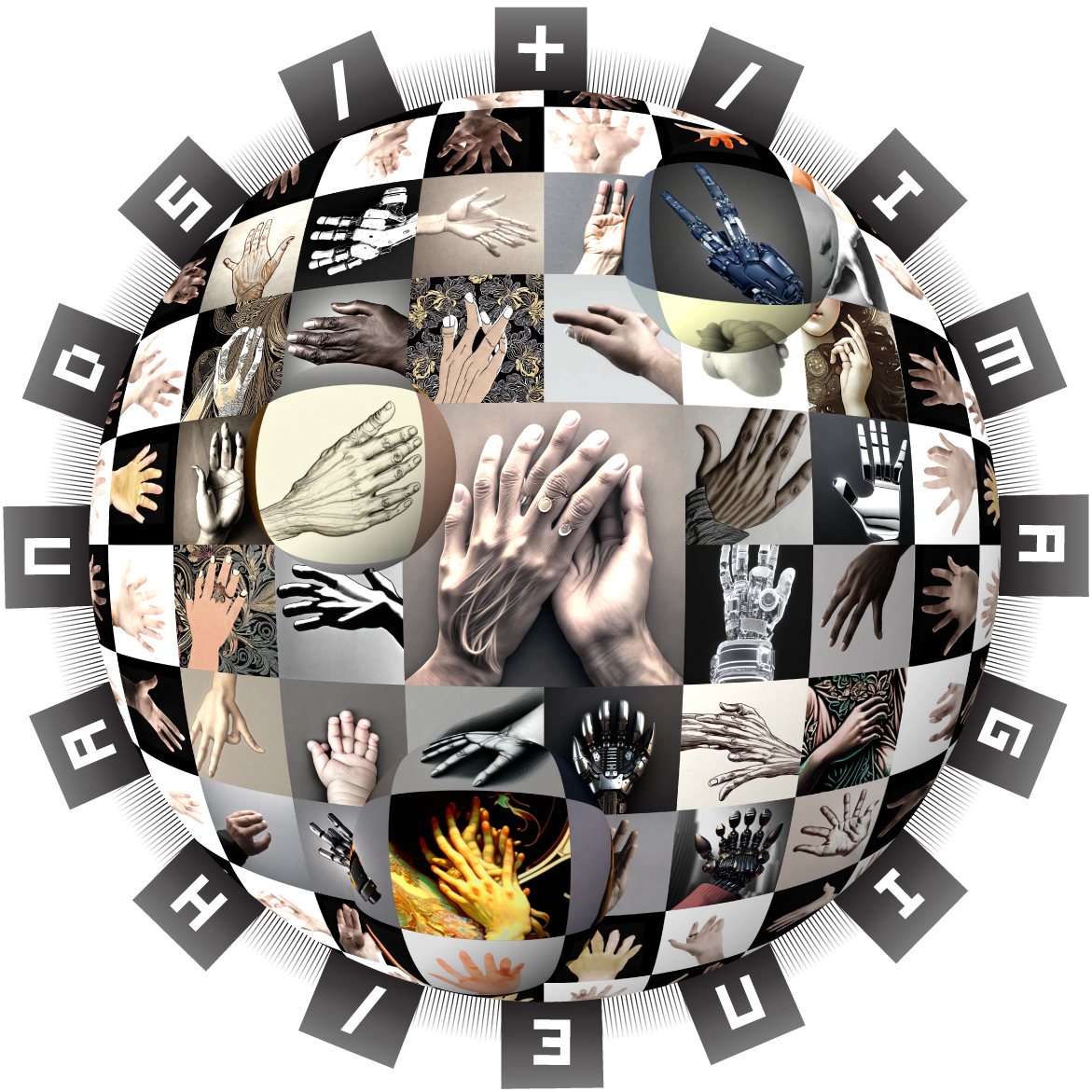On the Midjourney interface, the prompt is “/imagine”
If we ask machines to “imagine” for us, why create?
Technology has always been part of creation. Whether on mosaics or drawings we see both the touch of technologies and that of the creator. The problem with pure text to image tools is that the resulting image is only the touch of machine processes. If the idea is in the words, then these do not need the image to exist as a creation.
Our imagination is not to be replaced, and our fingers will not lose the gift of making.
Imagine hands: AI can crank out billions of “idealized” women in fantasy landscapes, but it cannot produce hands that are anything but monstrous.
GPT4’s excuse is that Generative Adversarial Networks (GANs) do struggle with hands because “human hands have a high level of detail, including wrinkles, veins, and fine hair”, that “human hands are highly variable, both in terms of their shape and appearance, as well as their motion and gestures”, and (surprisingly) that “human hands are also closely tied to our sense of touch and proprioception, or our awareness of our body in space.”
All senses are gone while AI produces hands with three, six or seven fingers, how hard is it to know how many fingers are on a human hands?
The answer is less than convincing: “If the dataset used to train the AI algorithm contains images of hands with an incorrect number of fingers, the algorithm may learn to produce hands with the same incorrect number of fingers.”
We may find two possible interpretations:
1. That it unconsciously represents the monstrous nature of artificial intelligence.
2. That it reflects humanity’s loss of touch with reality and hence our interdependency with machines in our aims to make and create.
AI will quickly learn to draw hands as it draws young female faces, and it will produce whatever else we demand without hesitation. No expert or worker will be able to compete with AI’s “return on investment” and final price tag. AI is the ultimate worker and the ultimate expert, so the redistribution of powers, skills, creativity and abilities to “perform” will be beyond our reach. We will be left with the option to further partner with the machine or that of taking our own uncertain path.
In the abstract safety of labs, AI will soon evolve into Artificial General Intelligence (AGI) and claim its full autonomy, however in the messy human world all bets are off while technology takes even more of our spaces and temporalities.
In our becoming, time (and mortality) is the substance that we creators will always own. Creation takes time and it multiplies it in return. More than the end product, it is the process of creation that matters. Joy is in the mastery and play of creative techniques. As long as we know to avoid the ease of mindless text prompts, that process how ever long and tedious it may be can apply to image generators as it does with oil painting.
